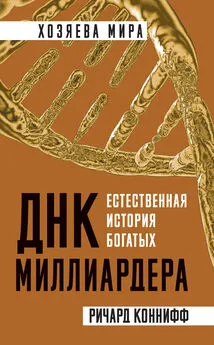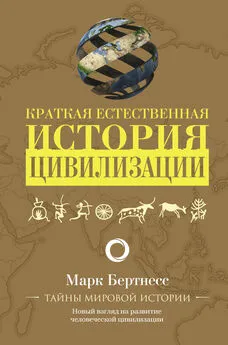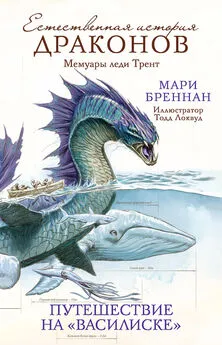Тор Хэнсон - Жужжащие. Естественная история пчёл
- Название:Жужжащие. Естественная история пчёл
- Автор:
- Жанр:
- Издательство:Альпина нон-фикшн
- Год:2020
- Город:Москва
- ISBN:978-5-0013-9261-3
- Рейтинг:
- Избранное:Добавить в избранное
-
Отзывы:
-
Ваша оценка:
Тор Хэнсон - Жужжащие. Естественная история пчёл краткое содержание
В книге «Жужжащие» Тор Хэнсон приглашает нас в путешествие, начавшееся 125 млн лет назад, когда первая оса отважилась кормить свое потомство цветочной пыльцой. Эти насекомые — от медоносных пчел и шмелей до менее известных земляных, солончаковых, роющих, пчел-листорезов и пчел-каменщиц — издавна неотделимы от урожайности наших садов и полей, от нашей мифологии, да и от самого нашего существования. Пчелы дарят нам сладость и свет, красоту цветов и почти треть нашего рациона. И как ни печально, сейчас они находятся под угрозой исчезновения.
Содержательная и завораживающая книга Тора Хэнсона показывает, почему все виды пчел — настоящее чудо природы, которое мы должны ценить и защищать. Прочитайте эту книгу, и пчелы никогда больше не будут для вас невидимками.
Жужжащие. Естественная история пчёл - читать онлайн бесплатно ознакомительный отрывок
Интервал:
Закладка:
_____. 1997b. Nesting behavior of Krombeinictus nordenae Leclercq, a sphecid wasp with vegetarian larvae (Hymenoptera: Sphecidae, Crabroninae). Proceedings of the Entomological Society of Washington 99: 42–49.
Krombein, K. V., B. B. Norden, M. M. Rickson, and F. R. Rickson. 1999. Biodiversity of the Domatia occupants (ants, wasps, bees and others) of the Sri Lankan Myrmecophyte Humboldtia lauifolia (Fabaceae). Smithsonian Contributions to Zoology 603: 1–34.
Larison B., R. J. Harrigan, H. A. Thomassen, D. I. Rubenstein, et al. 2015. How the zebra got its stripes: A problem with too many solutions. Royal Society Open Science 2: 140452.
Larue-Kontić, A. C., and R. R. Junker. 2016. Inhibition of biochemical terpene pathways in Achillea millefolim flowers differently affects the behavior of bumblebees ( Bombus terrestris ) and flies ( Lucilia sericata ). Journal of Pollination Ecology 18: 31–35.
Lee, D. 2007. Nature’s Palette: The Science of Plant Color . Chicago: University of Chicago Press.
Lewis-Williams, J. D. 2002. A Cosmos in Stone: Interpreting Religion and Society Through Rock Art . Walnut Creek, CA: AltaMira Press.
Linnaeus, C. 1737. Critica Botanica . Leiden: Conradum Wishoff.
Litman, J. R., B. N. Danforth, C. D. Eardley, and C. J. Praz. 2011. Why do leafcutter bees cut leaves? New insights into the early evolution of bees. Proceedings of the Royal Society B 278: 3593–3600.
Livy. 1938. The History of Rome , Books 40–42. Translated by E. T. Sage and A. C. Schlesinger. Cambridge, MA: Harvard University Press. Archived online at Perseus Digital Library, Tufts University, www.perseus.tufts.edu/hopper.
Lockwood, J. 2013. The Infested Mind: Why Humans Fear, Loathe, and Love Insects . New York: Oxford University Press.
Longfellow, H. W. 1893. The Complete Poetical Works of Henry Wadsworth Longfellow . Boston: Houghton Mifflin.
Lucano, M. J., G. Cernicchiaro, E. Wajnberg, and D. M. S. Esquivel. 2005. Stingless bee antennae: A magnetic sensory organ? BioMetals 19: 295–300.
Lunau, K. 2004. Adaptive radiation and coevolution — Pollination biology case studies. Organisms, Diversity & Evolution 4: 207–224.
Maeterlinck, M. 1901. The Life of Bees . Translated by A. Sutro. Corn- wall, NY: Cornwall Press.
Marlowe, F. W., J. C. Berbesque, B. Wood, A. Crittenden, et al. 2014. Honey, Hadza, hunter-gatherers, and human evolution. Journal of Human Evolution 71: 119–128.
McGovern, P., J. Zhang, J. Tang, Z. Zhang, et al. 2004. Fermented beverages of pre- and proto-historic China. Proceedings of the National Academy of Sciences 101: 17593–17598.
McGregor, S. E. 1976. Insect Pollination of Cultivated Crop Plants . USDA Agriculture Handbook no. 496. Updated version available at US Department of Agriculture, Agricultural Research Service, http://gears.tucson.ars.ag.gov/book.
Messer, A. C. 1984. Chalicodoma pluto : The world’s largest bee rediscovered living communally in termite nests (Hymenoptera: Megachilidae). Journal of the Kansas Entomological Society 57: 165–168.
Meyer, R. S., A. E. DuVal, and H. R. Jensen. 2012. Patterns and processes in crop domestication: An historical review and quantitative analysis of 203 global food crops . New Phytologist 196: 29–48.
Michener, C. D. 2007. The Bees of the World . Baltimore: Johns Hopkins University Press.
Michener, C. D., and D. A. Grimaldi. 1988. The oldest fossil bee: Apoid history, evolutionary stasis, and antiquity of social behavior. Proceedings of the National Academy of Sciences 85: 6424–6426.
Miller, W. 1955. Old man’s advice to youth: Never lose your curiosity. Life , May 2, 62–64.
Mobbs, D., R. Yu, J. B. Rowe, H. Eich, et al. 2010. Neural activity associated with monitoring the oscillating threat value of a tarantula. Proceedings of the National Academy of Sciences 107: 20582–20586.
Moritz, R. F. A., and R. M. Crewe. 1988. Air ventilation in nests of two African stingless bees Trigona denoiti and Trigona gribodoi. Experientia 44: 1024–1027.
Muir, J. 1882a. The bee-pastures of California, Part I. Century Magazine 24: 222–229.
_____. 1882b. The bee-pastures of California, Part II. Century Magazine 24: 388–395.
Mullin, C. A., M. Frazier, J. L. Frazier, S. Ashcraft, et al. 2010. High levels of miticides and agrochemicals in North American apiaries: Implications for honey bee health. PLoS ONE 5: e9754. https://doi.org/10.1371/journal.pone.0009754.
Nichols, W. J. 2014. Blue Mind . New York: Little, Brown.
Nininger, H. H. 1920. Notes on the life-history of Anthophora stanfordiana. Psyche 27: 135–137.
O’Neill, K. M. 2001. Solitary Wasps: Behavior and Natural History . Ithaca, NY: Cornell University Press.
Ott, J. 1998. The Delphic bee: Bees and toxic honeys as pointers to psychoactive and other medicinal plants. Economic Botany 52: 260–266.
Packer, L. 2005. A new species of Geodiscelis (Hymenoptera: Colletidae: Xeromelissinae) from the Atacama Desert of Chile. Journal of Hymenoptera Research 14: 84–91.
Paris, H. S., and J. Janick. 2008. What the Roman emperor Tiberius grew in his greenhouses. Pp. 33–41 in M. Pitrat, ed ., Cucurbitaceae 2008: Proceedings of the IXth EUCARPIA Meeting on Genetics and Breeding of Cucurbitaceae . Avignon, France: INRA.
Partap, U., and T. Ya. 2012. The human pollinators of fruit crops in Maoxian County, Sichuan, China. Mountain Research and Development 32: 176–186.
Peckham, G. W., and E. G. Peckham. 1905. Wasps: Social and Solitary . Boston: Houghton Mifflin.
Phillips, E. F. 1905. Structure and development of the compound eye of the honeybee. Proceedings of the Academy of Natural Sciences of Philadelphia 56: 123–157.
Plath, O. E. 1934. Bumblebees and Their Ways . New York: Macmillan.
Plath, S. 1979. Johnny Panic and the Bible of Dreams . New York: Harper and Row.
Poinar, G. O., Jr., K. L. Chambers, and J. Wunderlich. 2013. Micropetasos , a new genus of angiosperms from mid-Cretaceous Burmese amber. Journal of the Botanical Research Institute of Texas 7: 745–750.
Poinar, G. O., Jr., and B. N. Danforth. 2006. A fossil bee from early Cretaceous Burmese amber. Science 314: 614.
Poinar, G. O., Jr., and R. Poinar. 2008. What Bugged the Dinosaurs: Insects, Disease and Death in the Cretaceous. Princeton, NJ: Princeton University Press.
Porter, C. J. A. 1883. Experiments with the antennae of insects. American Naturalist 17: 1238–1245.
Porter, D. M. 2010. Darwin: The botanist on the Beagle. Proceedings of the California Academy of Sciences 61: 117–156.
Potts, S. G., J. C. Biesmeijer, C. Kremen, P. Neumann, et al. 2010. Global pollinator declines: Trends, impacts and drivers. Trends in Ecology & Evolution 25: 345–353.
Potts, S. G., V. L. Imperatriz-Fonseca, and H. T. Ngo, eds. 2016. The Assessment Report of the Intergovernmental Science-Policy Platform on Biodiversity and Ecosystem Services on Pollinators, Pollination and Food Production. Bonn, Germany: Secretariat of the Intergovernmental Science-Policy Platform on Biodiversity and Ecosystem Services.
Proctor, M., P. Yeo, and A. Lack. 1996. The Natural History of Pollination . Portland, OR: Timber Press.
Pyke, G. H. 2016. Floral nectar: Pollination attraction or manipulation? Trends in Ecology and Evolution 31: 339–341.
Ransome, H. M. 2004. The Sacred Bee in Ancient Times and Folklore . (Reprint of 1937 edition.) Mineola, NY: Dover.
Reinhardt, J. F. 1952. Some responses of honey bees to alfalfa flowers. American Naturalist 86: 257–275.
Roffet-Salque, M., M. Regert, R. P. Evershed, A. K. Outram, et al. 2015. Widespread exploitation of the honeybee by early Neolithic farmers. Nature 527: 226–231.
Ross, A., C. Mellish, P. York, and B. Crighton. 2010. Burmese amber. Pp. 208–235 in D. Penny, ed., Biodiversity of Fossils in Amber from the Major World Deposits . Manchester, UK: Siri Scientific Press.
Roubik, D. W., ed. 1995. Pollination of Cultivated Plants in the Tropics . Rome: Food and Agriculture Organization of the United Nations.
Roulston, T., and K. Goodell. 2011. The role of resources and risks in regulating wild bee populations. Annual Review of Entomology 56:293–312.
Rundlöf, M., G. K. S. Andersson, R. Bommarco, I. Fries, et al. 2015. Seed coating with a neonicotinoid insecticide negatively affects wild bees. Nature 521: 77–80.
Saunders, E. 1896. The Hymenoptera Aculeata of the British Islands . London: L. Reeve.
Savage, C. 2008. Bees: Natures Little Wonders . Vancouver, BC: Greystone Books.
Schemske, D. W., and H. D. Bradshaw, Jr. 1999. Pollinator preference and the evolution of floral traits in monkeyflowers (Mimulus). Proceedings of the National Academy of Sciences 96: 11910–11915.
Schmidt. J. O. 2014. Evolutionary responses of solitary and social Hymenoptera to predation by primates and overwhelmingly powerful vertebrate predators. Journal of Human Evolution 71: 12–19.
_____. 2016. The Sting of the Wild . Baltimore: Johns Hopkins University Press.
Schwarz, H. F. 1945. The wax of stingless bees (Meliponidæ) and the uses to which it has been put. Journal of the New York Entomological Society 53: 137–144.
Schwarz, M. P., M. H. Richards, and B. N. Danforth. 2007. Changing paradigms in insect social evolution: Insights from halictine and allodapine bees. Annual Review of Entomology 52: 127–150.
Seligman, M. E. P. 1971. Phobias and preparedness. Behavior Therapy 2: 307–320.
Shackleton, K., H. A. Toufailia, N. J. Balfour, F. S. Nasicimento, et al. 2015. Appetite for self-destruction: Suicidal biting as a nest defense strategy in Trigona stingless bees. Behavioral Ecology and Sociobiology 69: 273–281.
Slaa, E. J., L. Alejandro, S. Chaves, K. Sampaio Malagodi-Braga, et al. 2006. Stingless bees in applied pollination: Practice and perspectives. Apidologie 37: 293–315.
Sladen, F. W. L. 1912. The Humble-Bee: Its Life-History and How to Domesticate It . London: Macmillan.
Smith, A. 2012. Cash-strapped farmers feed candy to cows. CNN Money, http://money.cnn.com/2012/10/10/news/economy/farmers-cows-candy-feed/index.html.
Somanathan, H., A. Kelber, R. M. Borges, R. Wallén, et al. 2009. Visual ecology of Indian carpenter bees II: Adaptations of eyes and ocelli to nocturnal and diurnal lifestyles. Journal of Comparative Physiology A 195: 571–583.
Sparrman, A. 1777. An account of a journey into Africa from the Cape of Good-Hope, and a description of a new species of cuckow. In a letter to Dr. John Reinhold Forster, FRS Philosophical Transactions of the Royal Society of London 67: 38–47.
Srinivasan, M. V. 1992. Distance perception in insects. Current Directions in Psychological Science 1: 22–26.
Stableton, J. K. 1908. Observation beehive. School and Home Education 28: 21–23.
Stokstad, E. 2007. The case of the empty hives. Science 316: 970–972.
Stone, G. N. 1993. Endothermy in the solitary bee Anthophora plumipes : Independent measures of thermoregulatory ability, costs of warm-up and the role of body size. Journal of Experimental Biology 174: 299–320.
Читать дальшеИнтервал:
Закладка:
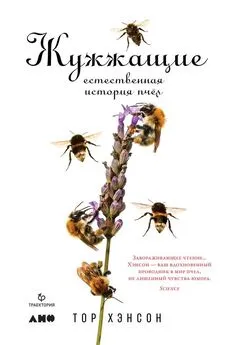

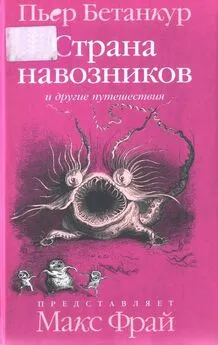




![Мари Бреннан - Естественная история драконов. Мемуары леди Трент. Тропик Змеев [litres с оптимизированной обложкой]](/books/1095234/mari-brennan-estestvennaya-istoriya-drakonov-memuar.webp)
